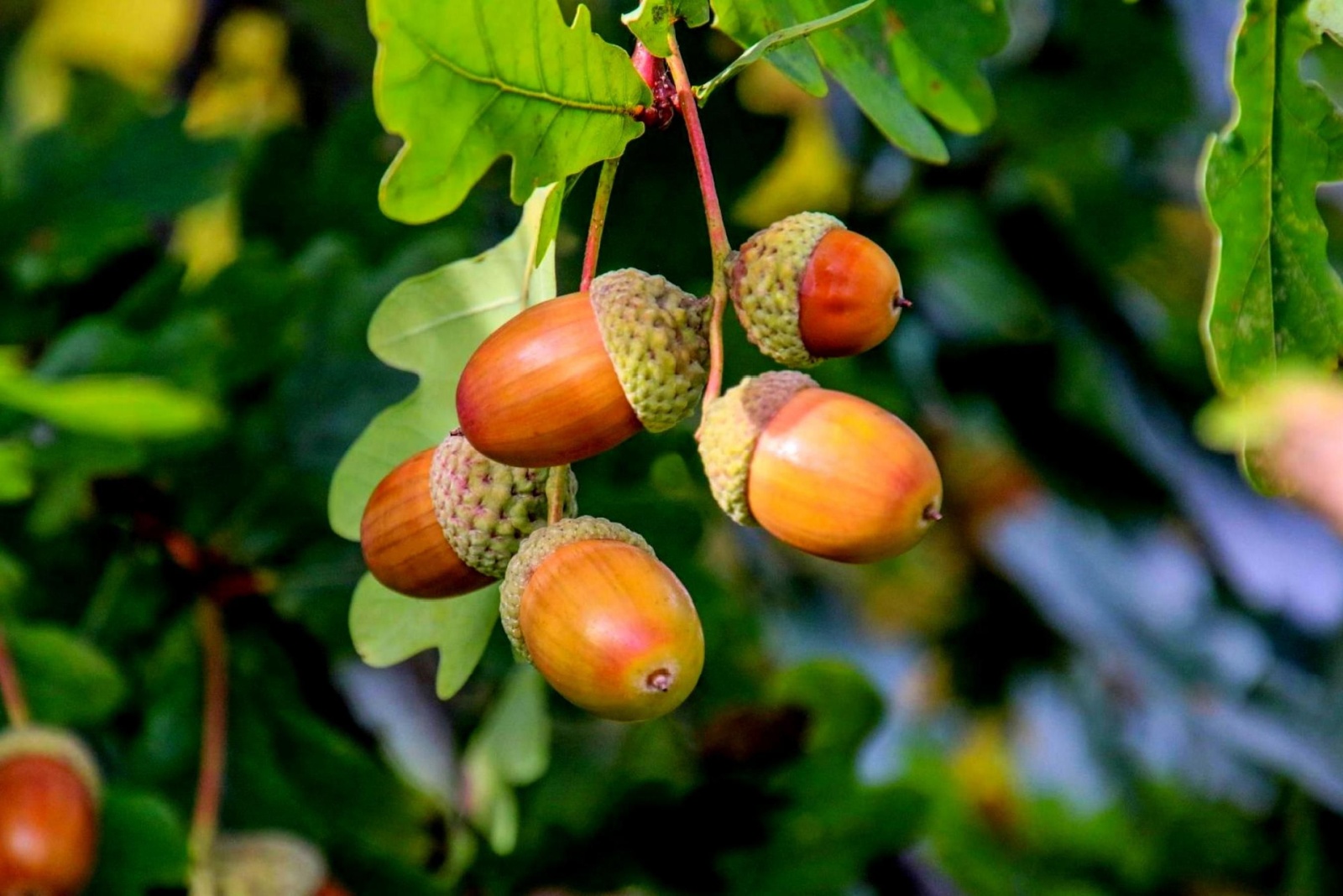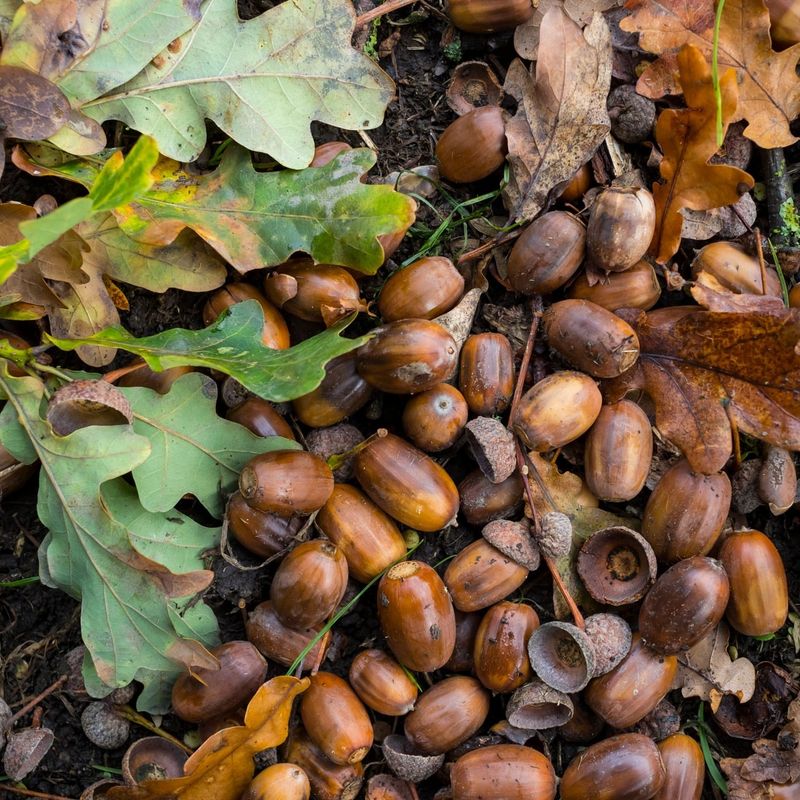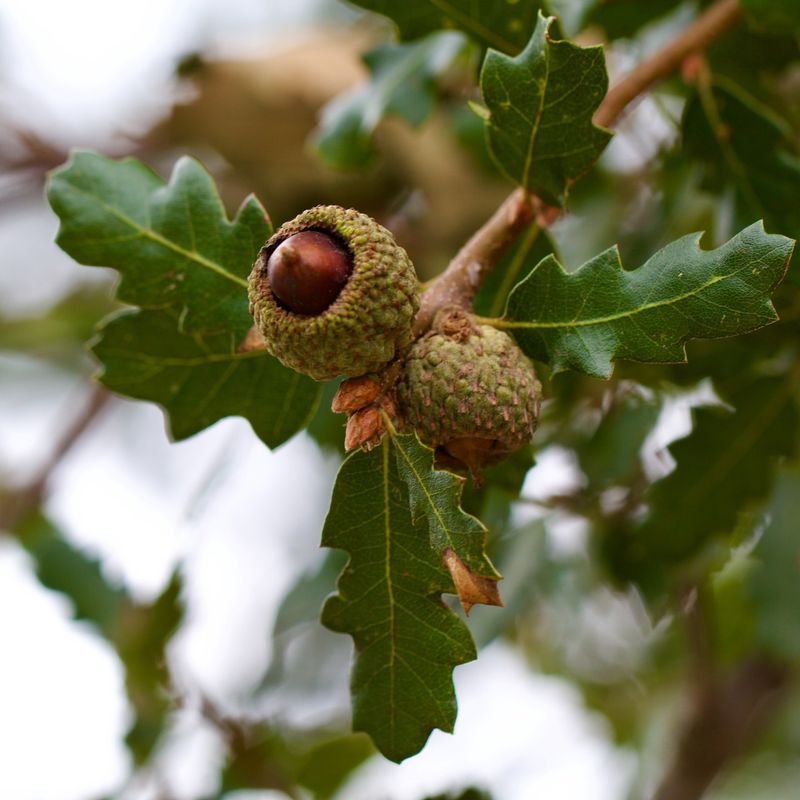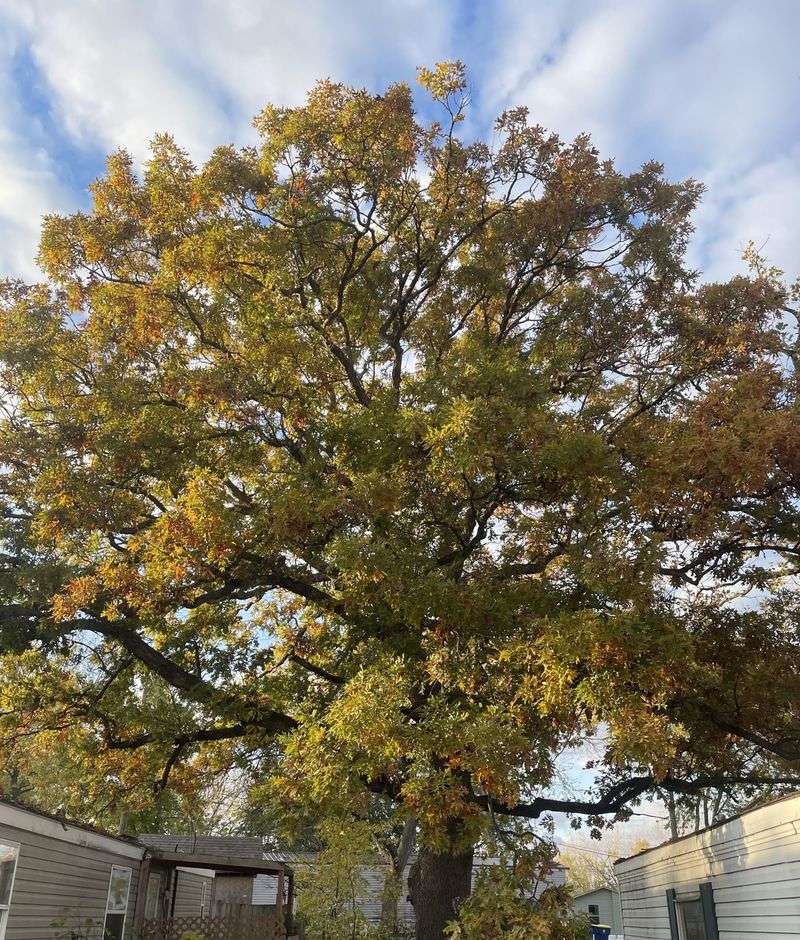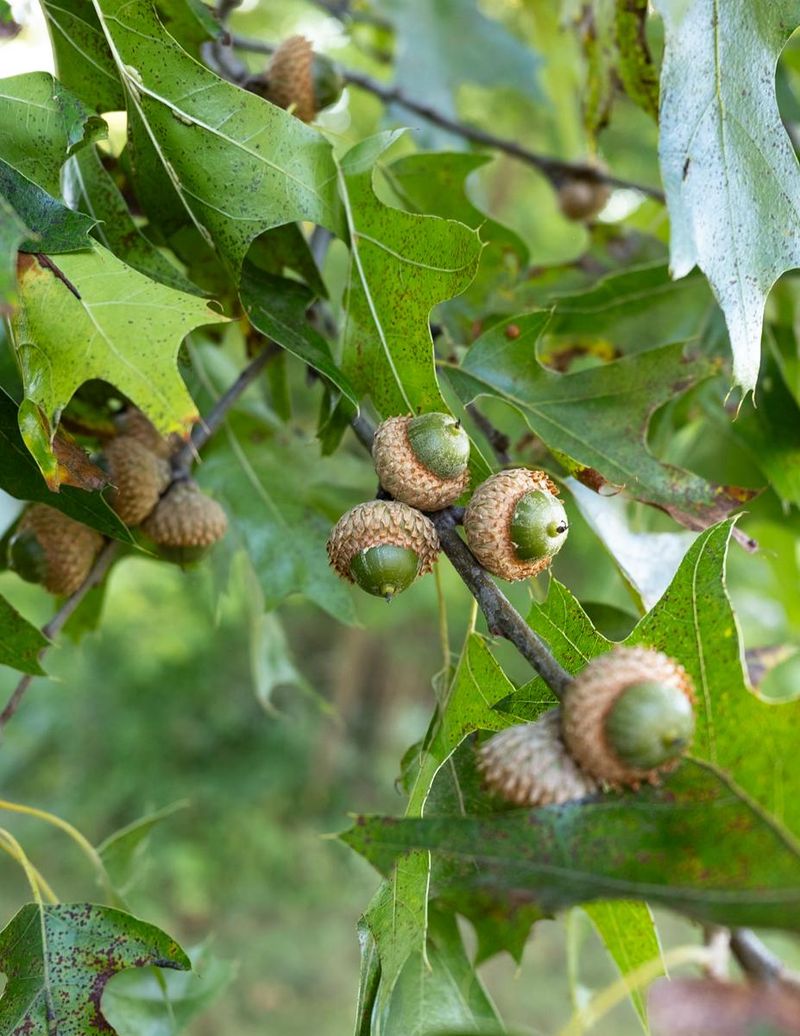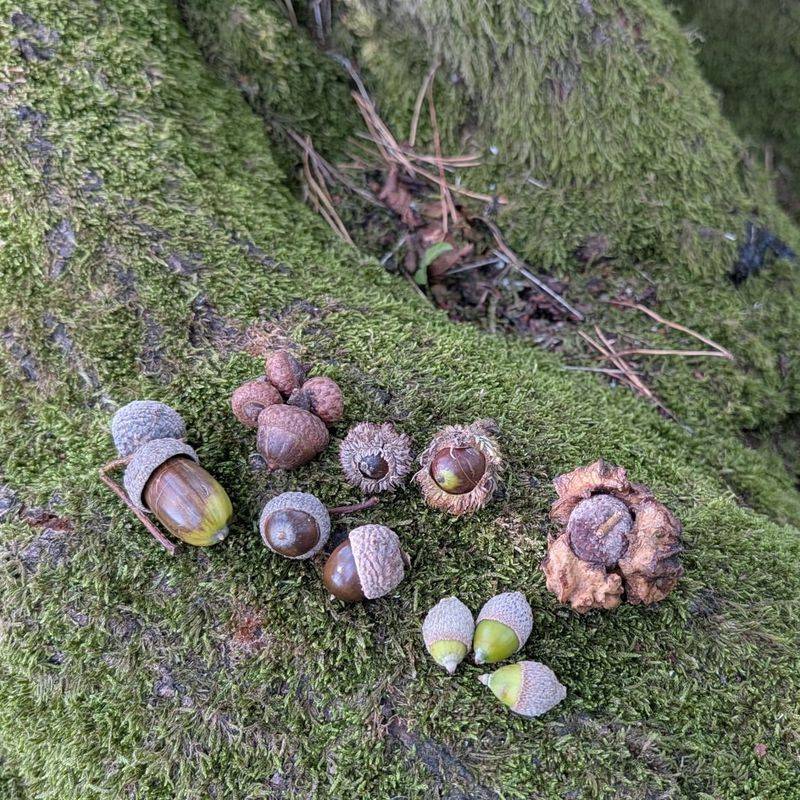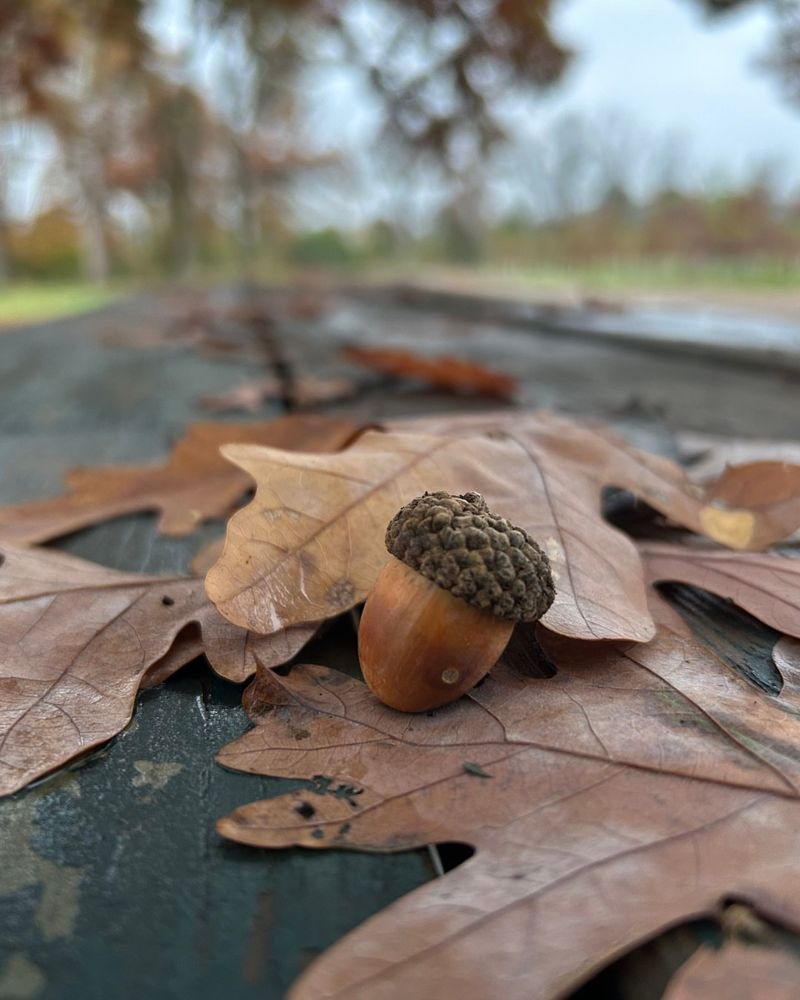Colorado oaks dump acorns this year in a way that turns heads and sparks questions across the state. Lawns fill with hard little shells, trails crunch under every step, and homeowners face buckets of unexpected bounty.
This sudden surge never comes out of thin air. Nature shifts, trees follow their own internal clocks, and wildlife activity adds clues. A heavy acorn season often signals deeper changes in climate, soil, or long-term tree cycles.
1. Mast Year Phenomenon
Oak trees don’t produce the same amount of acorns every year. Sometimes they go into overdrive and create what scientists call a mast year. During these special years, trees produce way more nuts than normal, flooding the ground with acorns.
This natural cycle happens every few years and helps ensure that at least some acorns survive to become new trees. When predators like squirrels can’t eat them all, more acorns get the chance to sprout and grow into mighty oaks across Colorado’s landscape.
2. Perfect Weather Conditions
Mother Nature served up ideal conditions for oak trees this year. Warm spring temperatures combined with just the right amount of rainfall created a perfect recipe for acorn production. Trees responded by making tons of flowers that eventually turned into acorns.
Colorado’s weather patterns this year gave oak trees everything they needed at exactly the right time. Mild winters followed by gentle spring rains meant trees had plenty of energy stored up. When summer arrived, those conditions translated into bumper crops of acorns falling everywhere.
3. Increased Oak Tree Maturity
Many oak trees planted decades ago across Colorado neighborhoods are finally hitting their prime acorn-producing years. Older, mature trees produce significantly more acorns than younger ones. Think of it like how fruit trees give more apples as they age.
Communities that planted oak trees back in the 1980s and 1990s are now seeing the payoff. Those trees have developed strong root systems and large canopies. Their increased size and health mean they’re capable of dropping thousands of acorns each season.
4. Drought Recovery Response
After experiencing drought stress in previous years, Colorado’s oak trees are bouncing back with enthusiasm. Trees often respond to recovery periods by producing extra acorns. It’s nature’s way of making up for lost time and ensuring the species survives tough conditions.
When trees sense better conditions returning, they shift energy toward reproduction. Producing massive amounts of acorns becomes a priority. This survival strategy helps oak populations recover and spread after challenging environmental periods that threatened their ability to reproduce successfully.
5. Reduced Pest Populations
Fewer pests attacking oak trees this year meant more energy available for acorn production. Insects and diseases that normally stress trees and reduce their nut output were less prevalent. When trees stay healthy, they channel resources into making seeds instead of fighting off invaders.
Colorado’s oak trees benefited from natural pest control and favorable conditions that kept harmful insects in check. Without constant attacks draining their strength, trees could focus on reproduction. Healthy leaves mean better photosynthesis, which translates directly into more acorns hitting the ground this fall.
6. Synchronized Tree Behavior
Oak trees in the same area often coordinate their acorn production through chemical signals and environmental cues. When one tree senses good conditions, neighboring trees pick up on those signals and respond similarly. This synchronized behavior creates years when entire forests produce acorns together.
Scientists believe trees communicate through underground fungal networks and airborne chemicals. This coordination overwhelms animals that eat acorns, ensuring some nuts survive to germinate. Colorado’s oak populations seem to be in sync this year, creating the widespread abundance you’re noticing everywhere.
7. Climate Pattern Shifts
Changing climate patterns in Colorado are affecting when and how much oak trees produce. Warmer average temperatures and shifted precipitation patterns can trigger increased acorn production as trees adapt to new conditions. Some scientists think trees sense environmental changes and respond by making more seeds.
Extended growing seasons give trees more time to develop acorns. Earlier springs and later frosts mean longer periods for nut production. While climate change brings challenges, some oak species are responding with increased reproduction efforts, leading to more acorns carpeting Colorado’s parks and yards.
8. Urban Tree Stress Adaptation
City trees face unique stresses from pollution, compacted soil, and limited water. Surprisingly, moderate stress can sometimes trigger trees to produce more acorns. When trees sense challenging conditions, they prioritize reproduction to ensure their genetic legacy continues even if they don’t survive long-term.
Urban oak trees in Colorado might be responding to environmental pressures by ramping up acorn production. This biological response helps ensure the next generation gets established. While we might find the extra acorns annoying on sidewalks, they represent trees working hard to adapt and survive in challenging city environments.

